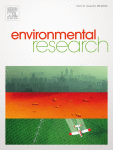 An investigation at the Queensland University of Technology in Australia has found that a paper on air pollution and human health contains a host of issues with the data and its analysis. The paper has been retracted with a very detailed note from Environmental Research.
An investigation at the Queensland University of Technology in Australia has found that a paper on air pollution and human health contains a host of issues with the data and its analysis. The paper has been retracted with a very detailed note from Environmental Research.
The issues with the paper include an “incorrect analysis of the data,” and its failure to properly cite multiple papers and one researcher’s contributions. Ultimately, according to the retraction note, the investigation found that the “conclusions of the paper are flawed.”
“Submicrometer particles and their effects on the association between air temperature and mortality in Brisbane, Australia” has been cited three times, according to Thomson Scientific’s Web of Knowledge.
The retraction note is very, very detailed. It outlines the problems with the paper:
This article has been retracted at the request of the Authors following an inquiry from the Queensland University of Technology (QUT). The inquiry found and it was confirmed by the authors that:
The article contained misleading and inaccurate information. Specifically, there was:
-incorrect analysis of the data, partly as a consequence of a failure of communication regarding the nature of the data set and how it was collected.
-incorrect and misleading description of how and when the data set was collected.
-failure to correctly attribute the source of the data.
-an incorrect description of the statistical methods and data selection.
-incorrect citation of papers in the description of the data collection.
It breaks down the issues further, in a numbered list. First up: “Data Analysis:”
-Dr Wang had full access to the International Laboratory for Air Quality and Health (ILAQH) database but did not have permission to copy or use any data which she did not collect.
-Dr Wang obtained a collection of raw data on ‘Submicrometer particles for the period of 1995–2000’ (the dataset) without permission from the ILAQH, QUT. The dataset constitutes the main focus of the paper.
2: “Accuracy of publication:”
The authors of the paper make misleading statements at Sections 2.1 (Data Collection) and 2.2 (Data Analysis). Specifically the authors:
-imply that one or more of them participated in the collection of the dataset;
-gave a false impression that the analysis was based on a far greater body than actually existed; and
-conducted an analysis that was based on incorrect assumptions about the data.
This section also notes that:
Conclusions of the paper are flawed.
And 3: “Incorrect citation and author acknowledgement:”
-The final sentence in Section 4 (Discussion) of the Paper makes two incorrect citations to Crouse et al. (2009, 2010).
-The Paper incorrectly cites two previously published ILAQH papers by Wang et al. (2011) and Morawska et al. 2001. Specifically:
-The cited papers do not refer to the dataset used by the authors.
-The Paper failed to cite previous papers by Morawska et al. (1998, 1999) and Mejia et al. (2007) that presented an analysis of the dataset used by the authors.
There was a failure by the authors to acknowledge ILAQH and Prof Morawska’s contribution to the paper.
The paper looks at how pollution and air temperature “jointly affect human health.” Here’s the conclusion, according to the abstract:
The results showed that the effects of air temperature on mortality were lower among the elderly and people with respiratory diseases, and greater among people with cardiovascular diseases after controlling for submicrometer particle concentrations. Submicrometer particles seem to be an important confounder for the temperature– mortality relationship, particularly among vulnerable groups, and should be taken into account when assessing the impacts of air temperature on human health.
We asked José Luis Domingo Roig, the editor in chief Environmental Research, if any other papers in the journal were affected by the investigation:
There is not any other paper of this group of the Queensland University that has been retracted by Environ Res, or even questioned for a potential retraction.
An email to Weiwei Yu, the corresponding author, at her QUT address bounced back. We could not find her listed in the University’s directory. We emailed QUT, the journal, and authors Shilu Tong and Sam Toloo — who both work at QUT — for more information. We’ll update this post with anything else we learn.
Like Retraction Watch? Consider making a tax-deductible contribution to support our growth. You can also follow us on Twitter, like us on Facebook, add us to your RSS reader, and sign up on our homepage for an email every time there’s a new post. Click here to review our Comments Policy.
I am absolutely thrilled to see ER take the lead on retracting a scientific paper for cause!
I am not an environmental researcher, but Inappropriate access to data is a major problem in the biomedical research field. Unethical data access, particularly in underdeveloped settings, without proper review by both local and the institutes of the outside researchers is rampant!
Here we have an excellent example of hyping and misleading the public and other researchers with the questionably obtained data.
A tip of the cap!
On the first note how did this paper get published? I wonder how it cleared the initial screening by the Editors and later the reviewers?